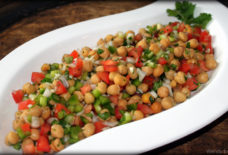The Arab Diaspora in Venezuela
Syrian and Lebanese diaspora during WWI.BY: Maria Yepez/ Arab America Contributing Writer
Venezuela has traditionally been one of the countries with the greatest Arab foreign receptivity in Latin America after Argentina and Brazil, with 4.5 million and 12 million. With a population of about 1.6 million people, both Arabs and Arabs Venezuelans have gained ground in many aspects of Venezuelan society. From Tarek El Aissami, the Minister of Industries and National Production, to Mariam Habach, Miss Venezuela 2015, many Arab Venezuelans have achieved renown as public figures. In addition, it is not unusual to see them run companies and businesses.
Even in the midst of Venezuela’s current crisis, the Arab community has a major influence on politics and the current government. They have also positioned themselves as first in the import of cars and food.
Exploring New Territories
A fact that surprises many people is that the Arab diaspora in Latin America is the largest in the world. For general context, the Arab diaspora started arriving in Latin America at the beginning of the 20th century as a result of the slow disintegration of the Ottoman Empire. The majority of these Arab migrants were Christians fleeing from modern-day Lebanon, Syria, and Palestine.
The first Arabic-speaking migrants who arrived in Venezuela landed in the late 19th and early 20th centuries. Furthermore, that initial wave was mainly composed of single young men from Syria and Lebanon who, as a result of the limitations in their homelands by socio-political conflicts, decided to explore new territories with hopes of progressing and finding a better future. Curiously enough, that first wave of Arabs was colloquially known as “Turcos” (Turks) because since they were under Turkish rule, they would usually enter the country with passports from said country.
These Arab settlers worked for many years in different trade types such as textiles, shoe repair, sale and repair of appliances, restaurants, and clothing. In addition, the Arab colony that settled down in “Isla de Margarita” (Margarita Island) also engaged in pearl fishing in the beautiful Caribbean Sea.
Initially, the Arab diaspora was relatively small because of the hassle (in both time and distance) that supposed the transfer from Europe or Asia in transoceanic boats. In addition, these journeys were very unpleasant because of the physical discomfort brought by the seasickness that did not sit well with those not accustomed to sea voyages. Even though these migrants represented a small portion of the population, they managed to blend into Venezuelan culture, overcoming all the disadvantages associated with radically different languages, norms, customs, and overall culture easily.
Given that Venezuela’s two major Arab colonies are Syrian and Lebanese, we will briefly cover their origins in the Latin American country.
The Lebanese Diaspora
Early 20th century postcard of the Beirut Port depicting ships used for migration.It was in the second half of the 19th century when the first wave of Lebanese migrants touched the warm Caribbean lands of Venezuela. From that very first moment, these Arab settlers started to change the social composition of Venezuela. During that century and the next, Lebanese migrants continued to arrive with massive waves settling in the country during the dictatorship of Marcos Perez Jimenez in the 1950s and during the Lebanese civil war in the 1970s and 1980s.
Although the vast majority speaks Spanish, Arabic is spoken mainly by Lebanese colonies in Margarita Island, Maracaibo, Puerto la Cruz, Maracay, and in the capital, Caracas. On another note, the Lebanese migrants that settled in Venezuela are, in their majority, Christians, but they’re also known as Eastern Catholics and Orthodox groups. In terms of Islam, Muslims have been a minority that has been growing ever since Margarita Island declared a tax-free zone in the early 2000s, establishing a well-known colony in the Caribbean island. Finally, there is also records of the Druze, a mystical religion in Lebanon and Syria, looking for refuge in the Latin American country.
The Syrian Diaspora
Syrian immigrant children.Another huge Arabic-speaking population that has enriched Venezuela’s diversity is the Syrian diaspora, which is often quoted as the biggest migrant group of Arab origin in the country. Syrian Venezuelans, mostly Christians and largely from the now-devastated city of Aleppo, found a home in different areas of the country such as Caracas, Puerto Ordaz, Maracay, and Margarita Island, resulting in large and powerful Syrian colonies.
The Syrian migration to Venezuela began towards the end of the nineteenth century, as many Syrians had to flee their country during the Ottoman Empire’s downfall. However, the biggest Syrian wave resulted from the oil boom that took place under Marcos Perez Jimenez dictatorship when the economy was stable, and job opportunities were ample. Ever since then, the flow of migrants between Syria and Venezuela has been persistent. Another turning point in Syrian migration happened in 2015 when hundreds of thousands of Syrian refugees arrived in Venezuela after escaping from the war in Syria.
The Arab diaspora can be found worldwide, always influencing new territories with its delicious gastronomy and interesting culture, and Venezuela was not an exception. This beautifully diverse land with Latin, European and African flavor suddenly found itself welcoming to the mix the Arab flavor.
Check out Arab America’s blog here!









